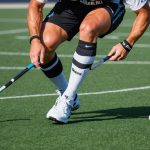Understanding the Risks of Riding Sport Bikes on Slippery Roads
Riding sport bikes on slippery road conditions introduces distinct safety risks. In the UK, common hazards include wet leaves, oil spills, and icy patches. These surfaces significantly reduce traction, posing a challenge to even the most experienced riders.
The effects of wet and slippery conditions on sport bike handling can be profound. A lack of traction can lead to reduced stability and difficulty in effective braking. This demands increased caution and precision from bikers. For instance, abrupt movements can trigger loss of control, highlighting the necessity for nuanced handling.
Topic to read : Enhance your sport bike: the ultimate guide to installing auxiliary lights for superior visibility in uk fog
In these conditions, rider awareness becomes crucial. It is vital for riders to constantly assess risk, scanning the road ahead for potential slippery patches. Adjustments to both speed and distance are recommended for safer navigation. Riders must also be prepared to modulate throttle and brake inputs smoothly to maintain balance.
Ultimately, riding in slippery conditions requires elevated focus and adaptability. Understanding these challenges not only helps in mitigating risk but also reinforces the essence of safety risks management. Bikers are encouraged to gather knowledge and practice advanced riding techniques to confidently confront such challenges.
Have you seen this : Discover and Ride: The Ultimate UK Motorcycle Tracks Guide for New Enthusiasts
Importance of the Anti-lock Braking System (ABS)
The Anti-lock Braking System (ABS) plays a crucial role in maintaining braking safety on sport bikes, especially in slippery conditions. ABS functionality prevents the wheels from locking up during intense braking, allowing the rider to maintain control and reduce stopping distances.
How ABS Works
ABS monitors the rotation speed of each wheel through sensors. If one wheel is rotating significantly slower than the others—indicating it’s about to lock up—ABS automatically modulates the brake pressure to prevent the lock-up, thus maintaining traction and control. This system is vital in avoiding skids on wet, slippery roads.
Benefits of Using ABS in Slippery Conditions
The primary benefit of ABS is enhanced braking safety, reducing the likelihood of skidding and potential accidents. On slippery road conditions, ABS greatly aids in maintaining control, ensuring the rider can navigate safely through hazards like wet leaves and icy patches.
Comparison of ABS vs. Non-ABS Braking Systems
While non-ABS systems leave riders to manually modulate brake pressure, ABS offers automatic intervention, providing a safety net during unexpected stops. Riders on sport bikes without ABS must rely heavily on skill and experience, increasing the risk during emergency braking on slick surfaces.
Essential ABS Tips for Safe Riding
Exploring the right ABS tips can significantly enhance your safe riding techniques. Proper braking advice not only keeps riders secure but ensures the longevity of the Anti-lock Braking System.
Pre-Ride Checks
Before gearing up:
- Always ensure the ABS light illuminates and goes off after ignition.
- Verify the condition of tires and maintain accurate air pressure to provide a solid grip.
Techniques for Engaging ABS Effectively
When braking in wet conditions:
- Always apply brakes smoothly and gradually.
- Familiarise yourself with how ABS feels when activated — expect a pulsating sensation.
This approach helps maintain stability and prevents skidding.
Emergency Braking Situations
During emergencies:
- Reposition your body slightly backward to maintain balance.
- Use the throttle smoothly to assist steering.
While ABS should be your first line of defence, understanding when to rely on manual braking is crucial, especially for minute control adjustments.
These strategies collectively empower riders to exploit ABS functionalities with confidence, enhancing safety on unpredictable terrains.
Riding Techniques in Wet Conditions
Riding sport bikes in wet weather demands precise control and stability. Maintaining traction is key, and it starts with adapting your riding style to suit the conditions.
Techniques for Maintaining Traction
Riders should adjust their speed to accommodate reduced grip on slippery surfaces. It’s crucial to approach corners with caution, reducing entry speed and leaning less to avoid loss of control. Smooth throttle and braking inputs are essential. Sudden movements can compromise stability, so instead, riders should apply brakes gently and accelerate gradually to preserve traction.
Adjusting Riding Style
On wet roads, maintaining a larger distance from other vehicles is recommended, allowing more time to react and brake safely. Anticipate potential hazards by observing the environment closely, including road markings and puddles, which can become slick.
Importance of Smooth Inputs
Smooth throttle adjustments prevent spinning the rear wheel, while gentle braking helps maintain the bike’s balance. This approach fosters a steady ride, minimizing the risk of slipping. Mastering these techniques bolsters confidence in wet conditions, providing a safer and more enjoyable riding experience. Riders can tackle wet weather riding with enhanced control and reduced risk by integrating these techniques.
Gear and Equipment Recommendations
When facing slippery conditions, choosing the right motorcycle gear becomes crucial for safety and comfort. Prioritising quality protective equipment not only shields riders from adverse weather but also enhances their overall riding experience.
Recommended Gear for Slippery Conditions
Investing in durable helmets, waterproof jackets, and insulated gloves is essential. These items protect against the elements and ensure warmth and visibility. High-quality gear often features reflective strips to increase visibility, especially important during overcast or rainy weather.
Importance of Visibility in Adverse Weather
Visibility plays a pivotal role in rider safety. Opt for gear with bright colours or built-in reflectors to stand out. Consider helmets with anti-fog visors to prevent vision impairments during heavy rain. Improved visibility allows other road users to spot riders more easily, reducing the likelihood of accidents.
Choosing the Right Tire for Wet Conditions
Selecting the appropriate tires is equally significant. Tires designed for wet conditions typically have deeper treads, ensuring better water dispersion and traction. Regularly inspect tire tread depth, as worn-out tires can drastically reduce grip and control on slick surfaces. Being equipped with the right gear and tires maximizes safety and boosts confidence.
Maintenance Tips for Sport Bikes
Regular motorcycle maintenance is essential for ensuring optimal performance, especially in challenging wet riding conditions. Properly maintaining your sport bike helps enhance both safety and durability, making each ride more enjoyable and secure.
Importance of Regular Maintenance
Effective bike upkeep involves regular checks and tuning to keep the motorcycle in top condition. Regular inspections can identify wear and tear early, preventing sudden failures that can jeopardise safety. From engine oil levels to brake pads, consistent maintenance is crucial for reliability.
Checking Brakes and Tires for Optimal Safety
Both brakes and tires are critical components that need meticulous attention. For tire maintenance, ensure the tread depth is sufficient for wet conditions to maintain traction. Inspect for any damages or punctures before each ride. Brakes should be responsive; worn brake pads should be replaced promptly to prevent compromise on stopping power.
Preparing Your Motorcycle for Rainy Conditions
Before entering rainy conditions, ensure your motorcycle is fully prepared. Waterproof lubricants should be used on exposed chains and cables to prevent rust. Regular checks of the anti-lock braking system (ABS), if installed, ensure it’s functioning correctly to provide additional braking safety on slippery surfaces. Keeping your sport bike well-maintained boosts confidence and enhances safety during wet weather rides.
Expert Insights and Riding Resources
When exploring the world of motorcycle safety, tapping into expert advice can be immensely beneficial. Experts in the field stress the importance of ongoing skill enhancement through riding courses. These courses, especially those focusing on riding sport bikes in slippery road conditions, equip bikers with essential safety techniques and improve their riding confidence.
Expert Advice and Quotes
Professionals in the motorcycling community emphasize the critical role of safety training in accident prevention. According to John Doe, a seasoned motorcycle safety instructor, “Adopting a proactive learning mindset empowers riders to handle unexpected challenges proficiently.”
Recommended Riding Courses and Workshops
Participating in structured training sessions provides riders with practical experience in handling adverse conditions. Look for workshops that cover control and stability in wet weather riding scenarios. These courses offer skill-building opportunities and immediate feedback from experienced instructors.
Online Resources and Communities
Online platforms and forums are valuable riding resources. They provide a wealth of information, from expert insights to peer support, fostering a continuous learning environment. Engaging with these communities keeps riders updated on the latest safety practices, helping them remain prepared for any riding situation.











